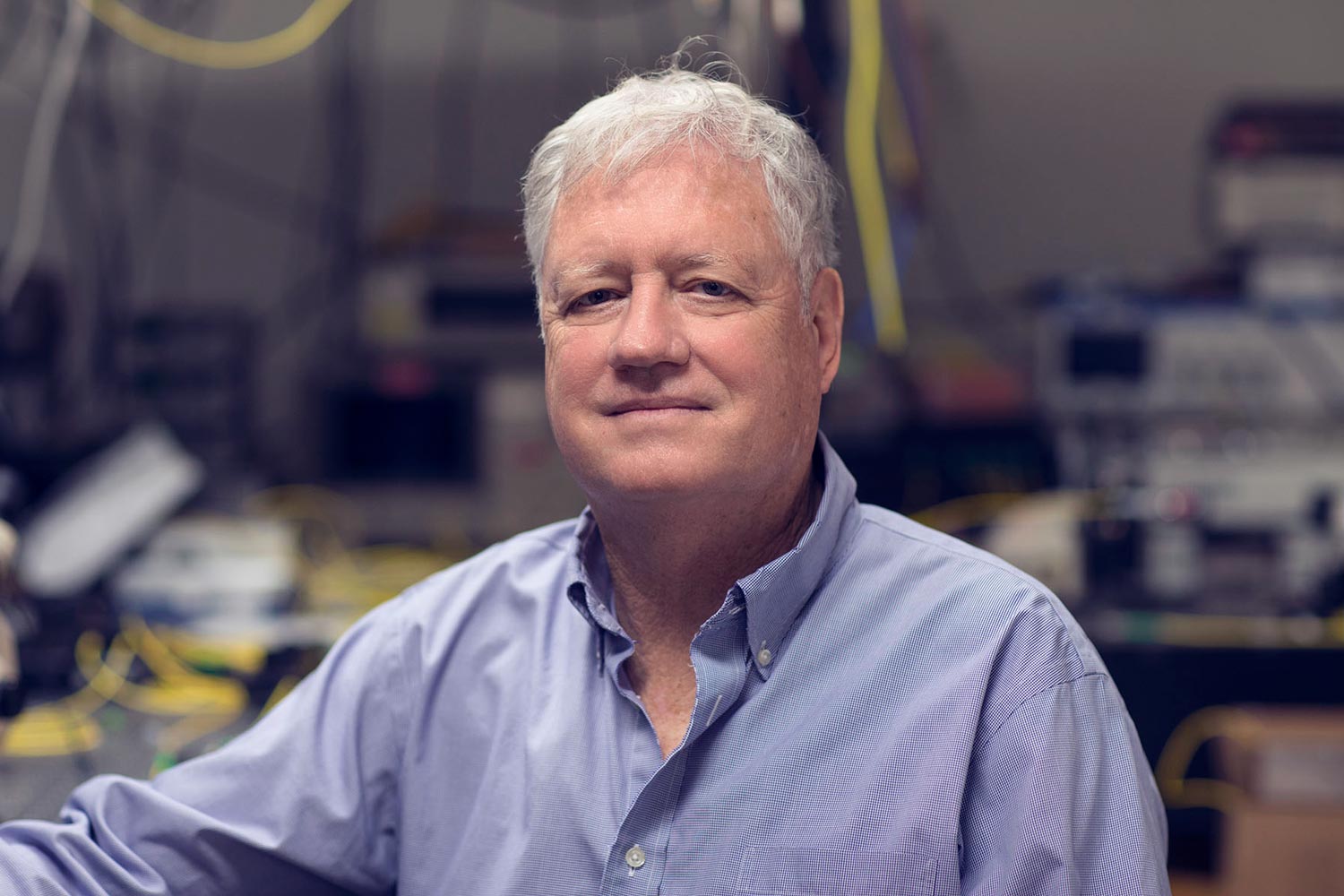Academic societies’ most prestigious honors are typically reserved for researchers at the ends of their careers, as a way to recognize a lifetime of groundbreaking work.
The Jun-ichi Nishizawa Medal from the Institute of Electrical and Electronic Engineers is no exception. One of just 16 medals that the 400,000-member professional organization presents each year, it singles out an individual who has made outstanding contributions to material and device science.
This year’s recipient, Joe Campbell, the University of Virginia’s Lucien Carr III Professor of Electrical and Computer Engineering, certainly meets this criterion. While no single person can take credit for the broadband communications networks that circle the globe, these networks would be far more constrained and much less powerful without the avalanche photodiodes that Campbell and his colleagues developed, beginning at Bell Laboratories in the 1980s and continuing at the University of Texas and UVA.
As Roger Howe, an eminent electrical engineering professor at Stanford and member of the award committee, noted, “Without Joe’s creative contributions to developing high-speed, low-noise photodiodes, we simply wouldn’t have the broadband connectivity we enjoy today.” Avalanche photodiodes also have paved the way for advances in medical imaging and high-energy physics.
But in Campbell’s case, the Nishizawa Medal may preface future contributions. He continues to operate a highly productive laboratory, creating ever-more effective photodiodes and exploring new applications.
“I have some really exciting projects that I am working on right now and a great group of graduate students,” Campbell said. “I can’t see a reason to slow down.”
For fiber optic networks, 1,550 nanometers is the magic number. That’s the infrared wavelength at which a pulse of laser light travels with the least attenuation through glass fiber. But even in the most flawless fiber, that signal ultimately fades. In 1983, Campbell created an avalanche photodiode capable of detecting faint photon signals at 1,550 nanometers, converting them to electron signals and then retiming and restoring them in the optical receiver. This reconstituted signal drives a laser, which sends the signal as photons down the next length of cable.
Campbell’s original receivers represented an order-of-magnitude improvement over existing devices, allowing telecommunications companies to use fewer receivers and place them farther apart. The properties of the semiconductors that Campbell and his colleagues developed limited operation to about 10 gigabytes per second, but by placing signals on as many as 80 separate wavelengths, telecommunications companies have boosted operations to 800 gigabytes per second.
Even this solution has its limitations. “With the demands on the Internet and wireless communications growing exponentially, there is a constant demand for ever-higher bit rates,” Campbell said. “Finding a better semiconductor material for avalanche photodiodes has been the holy grail for engineers and materials scientists for decades.”
After years of research, Campbell is fast closing in. Working with University of Texas professor Seth Bank, Campbell has created semiconductors with repeated layers of aluminum, indium, arsenic and antimony just a few atoms thick. Using this system, they have produced avalanche photodiodes capable of 25 gigabytes per second, and they believe they could go higher. They are exploring the quantum physics of devices in this family in hopes of improving performance.
In fact, Campbell’s enduring fascination with the world at the nanoscale has been an important thread running through his career – and it explains, in part, the decades of hard work and productivity that led to his selection for the Nishizawa Medal. As he put it, “The applications are exciting, but the real draw for me has always been studying the underlying physics and materials science that makes advances in applications possible.”
But there is another thread that was equally influential: his commitment to education.
“I know that if I had stayed at Bell Labs, I would have published more papers,” he admitted, “but I never would have touched as many people as I have as a professor.”
In his recommendation, Chennupati Jagadish, the distinguished professor of electronics materials engineering at the Australian National University who nominated Campbell for the award, was careful to note the large number of graduate students and post-doctoral fellows Campbell has mentored who have assumed leading positions in industry and academia.
One of these is Andreas Beling, now a colleague of Campbell’s at UVA Engineering. “Joe fosters creativity and out-of-the-box thinking,” Beling said. “Working with Joe was a transformative experience for me.”
Characteristically, Campbell sees the situation differently, understanding that his love for physics and materials science and his dedication to education are characteristics he shares with many other researchers who have had less spectacular careers.
“I have been exceptionally fortunate,” he said. “An award like the Nishizawa Medal is never the work of one person. I have been blessed with outstanding collaborators, and I have had students who carried me on their shoulders.”
Media Contact
Article Information
August 10, 2018
/content/pioneering-and-still-going-engineering-professor-crucial-broadband

